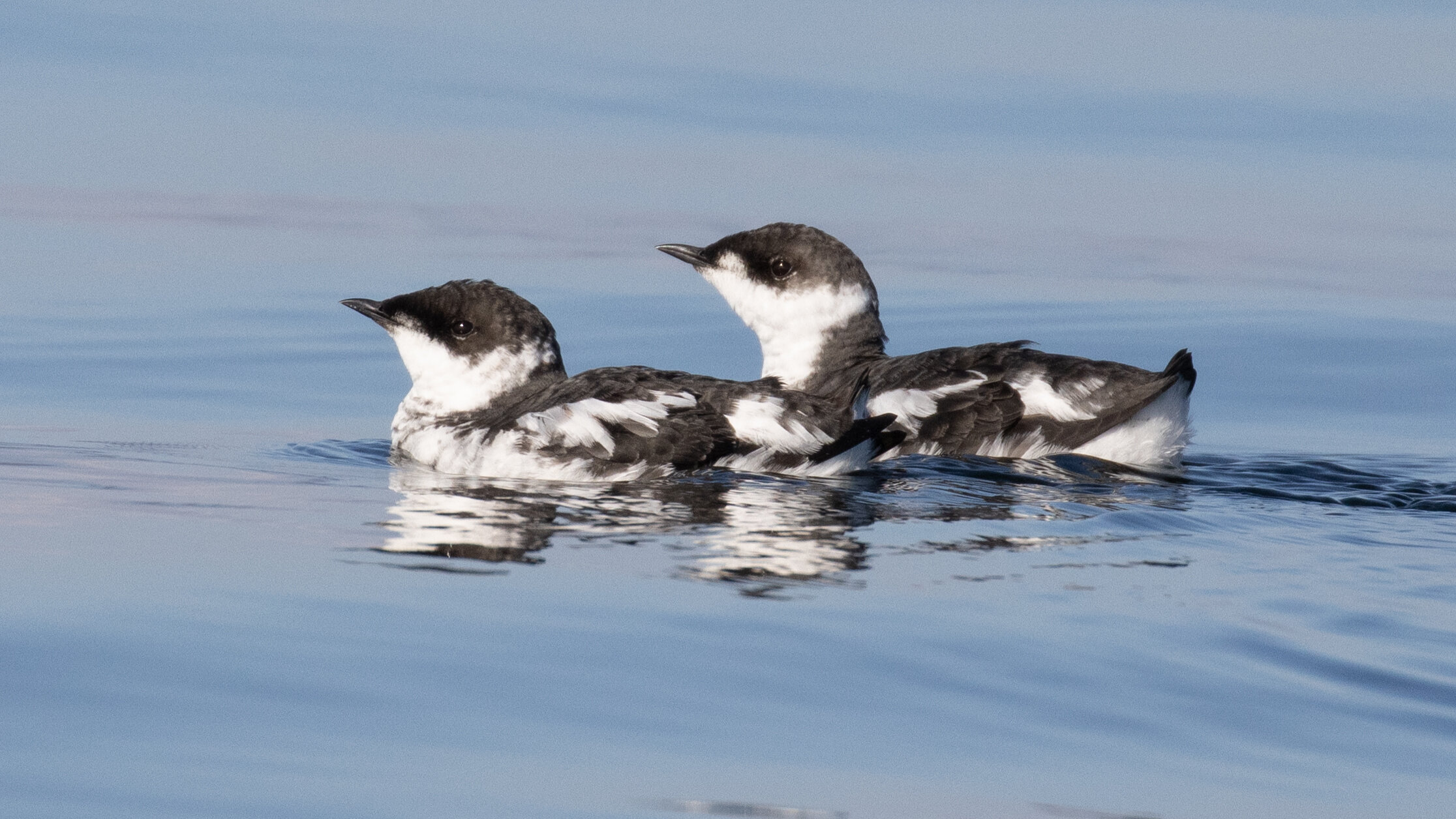Marbled Murrelet Facts
The marbled murrelet (Brachyramphus marmoratus) is a small unique bird that gets its name from its changing feather patterns. In the winter, they turn a stark white and black color, and during their summer breeding season, they become light brown and white, taking on a marbled effect. The marbled murrelet belongs to the Alcidae family along with the tufted puffin and pigeon guillemot. This small seabird is about the size of a robin and has short, powerful wings covered in a dense layer of waterproof feathers to help them dive underwater for fish.
DID YOU KNOW?
Their habitat differs from other alcids, splitting their time between the ocean and land, taking up residence in the forests of old-growth trees to nest.
Because marbled murrelets have evolved to swim through water, their webbed, clunky feet are not ideal for building nests and maneuvering across branches. Their nests will often consist of a simple patch of soft moss or lichen on wide branches, making old-growth trees the optimal nesting place.
They can dive up to almost 45 feet underwater. Using their small wings to propel them efficiently through the water and their webbed feet to steer.
For such a small bird, they lay uncommonly large eggs, about the size of a chicken egg.
Crows and Jays, members of the Corvid Family, are the most significant predator of marbled murrelets eggs throughout Washington, Oregon, and California.
Marbled murrelets have been referred to as the "enigma of the Pacific" because of their elusive behavior and hard-to-find nests.
The marbled murrelet has been listed as a threatened species under the US Federal Endangered Species Act in Washington, Oregon, and California. The recovery of their population relies on restoring and preserving their breeding habitat.
Photo by Eric Ellingson. Banner photo by David Ayers.


